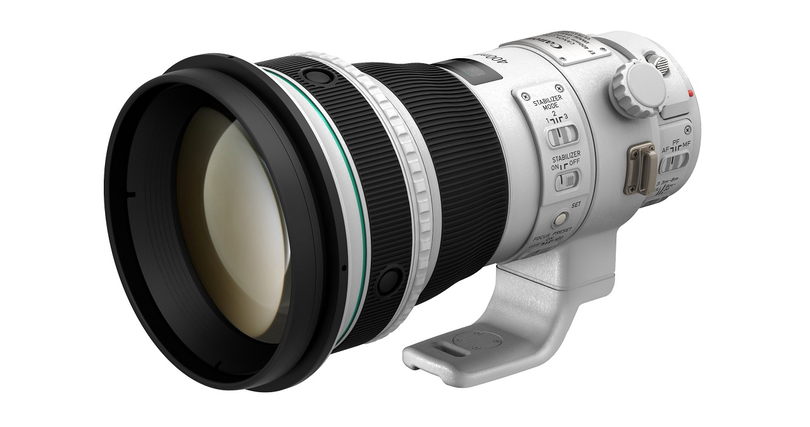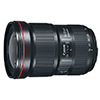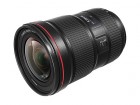
Hands-on with new Canon L-series RF zooms Canon has officially taken the wraps off two new L-series zooms for its RF mount - the RF 15-35mm F2. 8L IS USM, pictured above, and the RF 24-70mm F2.
8L IS USM. Both have been on the company's roadmap for a while, but we had the chance recently to handle early production samples, as well as a representative mockup of the RF 70-200mm F2. 8L IS USM, which is under development. Click through for some initial impressions.
Canon RF 15-35mm F2. 8L IS USM
The RF 15-35mm F2. 8L IS USM is a wide-angle zoom lens, built for professional and enthusiast use on Canon's RF-series mirrorless interchangeable lens cameras. Like Canon's other L-series RF zooms so far, it has three rings around its barrel - one for zoom, one for focus, and one control ring, which can be customized to various functions, in-camera.
Compact and weather-sealed
Designed from scratch for mirrorless, the RF 15-35mm F2. 8L IS USM is a relatively compact lens, which only extends slightly when zoomed out to its widest focal length position of 15mm. As we'd expect from an L-series lens, the 15-35mm F2. 8 is built to a high standard of construction, and is sealed against dust and moisture incursion.
5 stops of optical stabilization
The RF 15-35mm F2. 8L IS USM is optically stabilized, and Canon quotes an impressive CIPA figure of 5 stops of correction. We understand that in-camera stabilization will be added to the RF lineup in future, and in future cameras, in-camera stabilization will complement the optical system in lenses to provided even more shake correction.
In the current lineup of RF cameras without IBIS, the 15-35's stabilization performance is still boosted through a Dual Sensing I. S. system, something Canon has previously used in its PowerShot G7 X Mark II and EOS M50. While correction still happens inside the lens, the data from the gyro sensors inside the lens is helped out by information from the main imaging sensor. Canon states that this makes it easier to correct for low-frequency shake, and in practice we've found the system to be impressive, easily hand-holding the RF 35mm F1. 8 lens for 1-second long exposures.
The RF 15-35mm F2. 8L IS USM will be available in late September for $2299.
Canon RF 24-70mm F2. 8L IS USM
The RF 24-70mm F2. 8L IS USM joins Canon's RF lineup as a less expensive, possibly more practical alternative to the glorious stunt lens that is the RF 28-70mm F2. Nicely balanced on the EOS R, the 24-70mm is designed to be just as useful to videographers as stills photographers. To that end, focus breathing is greatly improved over the EF 24-70mm F2. 8L USM II and has in fact been almost eliminated.
Nano USM focus motor
A Nano USM focus motor handles AF, and the 24-70mm F2. 8 has only one focus element, which results in fast autofocus at all focus distances. We've been impressed with the speed of Canon's Nano USM technology in previous lenses, and welcome the inclusion of the technology in the latest RF lenses. It's a feat we don't imagine was particularly easy, given that traditionally Nano USM motors could only move small, lightweight elements.
We're also told that the position of this element - near the rear of the lens, close to the sensor - is the main contributing factor to the elimination of focus breathing.
Zoom lock
At 70mm, the 24-70mm extends somewhat, but a zoom lock prevents the 24-70mm from 'creeping' when carried or in-transit. Aside from this switch, the 24-70mm F2. 8 and 15-35mm F2. 8 are almost identical, cosmetically. They even weigh about the same, at 840g (15-35mm) and 900g (24-70mm), respectively.
The RF 24-70mm F2. 8L IS USM will also be available in late September for $2299.
Canon RF 70-200mm F2. 8L IS USM
Still technically 'in development', Canon has shared very little information about the RF 70-200mm F2. 8L IS USM, and in fact this is a non-functional mockup. While Canon hasn't confirmed it, we're all but certain that the 70-200mm will be an extending zoom design. As you can see, it's remarkably compact at 70mm, but we expect the lens to get quite a bit bigger when zoomed-in.
3-mode stabilization, and close focus
What little we do know about the 70-200mm F2. 8 is gleaned from the controls and labeling on the lens itself. It will offer 3-mode optical stabilization, a minimum focus distance of 0. 7m (2. 3 feet) and a focus limiter can be used to restrict hunting to the 2. 5m - infinity range.
We're told the impressive Nano USM technology also powers the focus motor in this lens, which should mean fast focus speeds.
Zoom lock and tripod foot
A zoom lock keeps the lens in its most compact configuration, locked to 70mm. A (presumably included) tripod foot can be removed for handheld shooting. And that's it! For now. We'll publish more details when we have them.
What do you make of the new Canon RF zoom lenses? Let us know in the comments.
. dpreview.com2019-8-28 07:00












